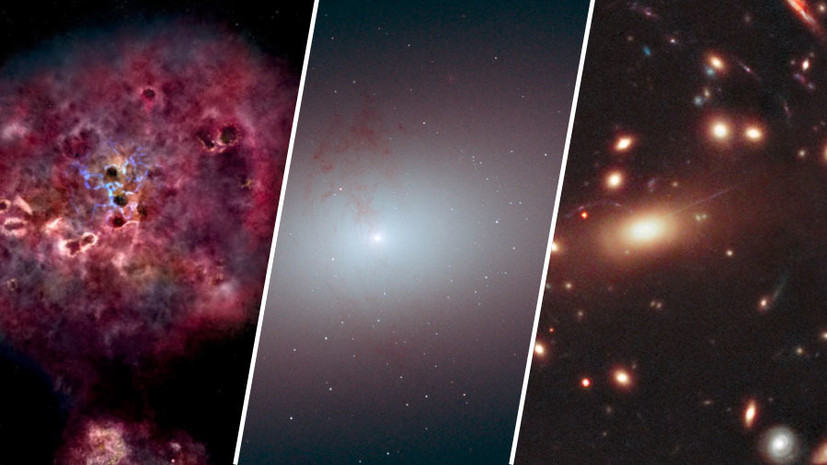An international group of astronomers from the USA, Germany, Italy, the Netherlands and Chile discovered an unusual monster galaxy, which actively developed about 12 billion years ago and mysteriously died, ceasing star formation. Data was obtained using an infrared spectrograph at the Keka Mountain Observatory in Hawaii. The discovery is reported by the Astrophysical Journal.
Scientists called the supermassive galaxy XMM-2599 and for its incredible size ranked it as a "monster". According to them, the galaxy began active star formation at the dawn of the history of our Universe (about 13 billion years ago) and created a huge number of stars in almost 1 billion years. At the peak of its activity, it annually formed stars with a total mass of more than 1000 solar masses. Calculations by scientists have shown that as a result, the XMM-2599 has grown to 300 billion solar masses.
“Notably, the XMM-2599 formed most of the stars at a frantic pace. And by the time the universe was only 1.8 billion years old, the galaxy had become inactive, ”said Benjamin Forrest, lead author of the work, an employee of the Department of Physics and Astronomy at the University of California at Riverside.
Scientists do not exclude that star formation could stop under the influence of a black hole, or the XMM-2599 for some reason stopped receiving energy.
“In this era, only a very few galaxies ceased to form stars, and among them there is not as massive as the XMM-2599,” says Forrest colleague, professor of physics and astronomy Gillian Wilson.
According to scientists, such objects should actively form stars for a long time. However, the XMM-2599 galaxy stopped doing this - this is its uniqueness, the researchers say. Astronomers also believe that the existence of such "dead monsters" will lead to a review of mathematical models of star formation in galaxies from the early history of the universe.
The further evolutionary path of the XMM-2599 is unclear, the researchers note, as they “caught” the galaxy in an inactive phase. Light from ancient galaxies goes to the Earth for billions of years, and one can only guess about the current state of the object.
Astronomers are sure of one thing: the galaxy cannot lose its mass. Therefore, theoretically, the XMM-2599 is capable of gravitationally attracting nearby star-forming galaxies and becoming one of the “brightest cluster galaxies” in the Universe, scientists say.

